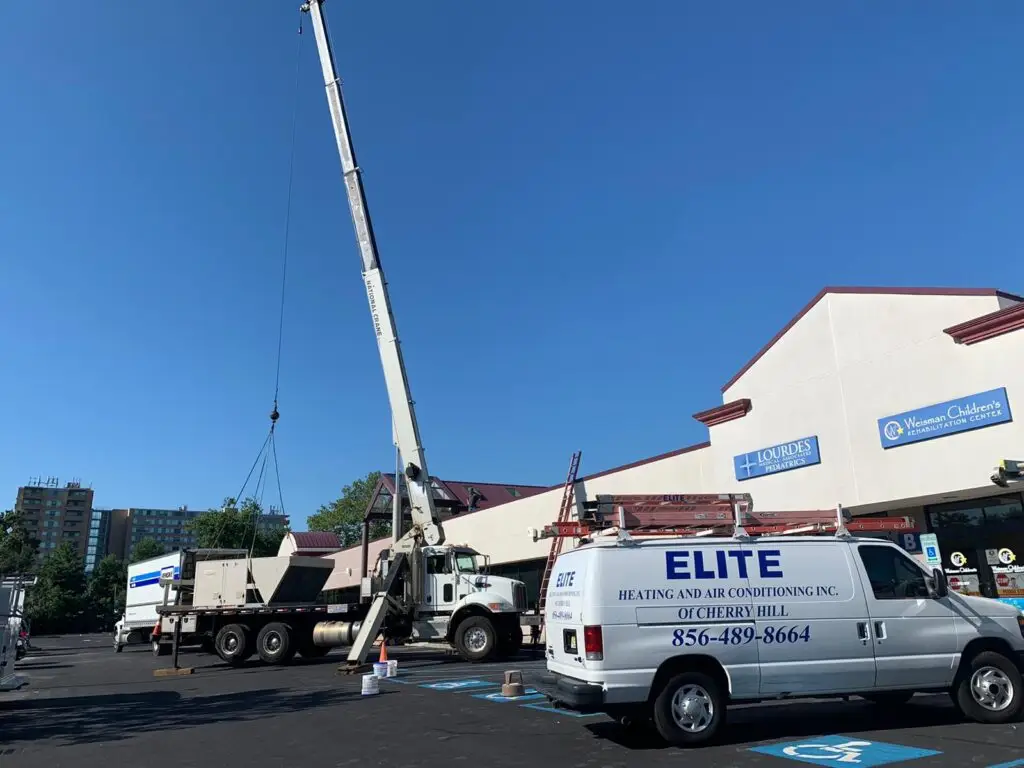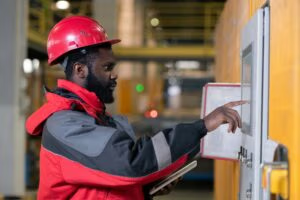Why Heat Exchangers in Rooftop Units Develop Rust and Cracks: Mystery Solved
Elite Heating and Air Conditioning understands that you are a property manager or a building owner. You keep the facility operating, but you don’t necessarily understand every component of a commercial HVAC system. You may be dumbfounded when a technician tells you that the heat exchanger in your gas-fired rooftop unit is cracked and rusted.
“How can that be?” you wonder. “Those things are encased in a heavy metal sheeting. We don’t jump on it! How can it possibly get cracked while sitting still on a rooftop?”
We get it. It seems strange that a solid piece of equipment that you don’t touch could fall apart, but it happens. We see damaged heat exchangers all the time!
Here’s how the heat exchangers in gas-fired rooftop units develop rust and cracks.
What’s a heat exchanger?
A heat exchanger is simply the component part within your system where heat is exchanged. (Hence the name!)
Air conditioning and heating work on the principle that heat can be transferred from one medium to another. Heat is pulled out of the air transferred into a fluid or a gas and moved to a different location.
Your rooftop unit includes a heat exchanger.
Commercial heat exchangers in rooftop units are essential components of HVAC systems, playing a crucial role in regulating temperature and ensuring indoor comfort. However, like any mechanical system, they are not immune to problems and challenges. It may seem like a mystery why they would go bad, but it’s not.
Heat exchangers on rooftop units develop cracks and rust for these reasons:
ONE: Reduced airflow
The most common cause of an overheated heat exchanger is a dirty air filter.
(Building owners and property managers should make sure to track filter changes and ensure they occur on a regular basis!)
If the airflow in a heat exchanger is restricted, it has to work much harder, causing more expansion and contraction and wear and tear on the equipment.
Over time, all that expanding and contracting develops cracks, often near welds or bends.
TWO: Age
Heat exchangers are made of metal. Heat causes the metal to expand. Cold causes the metal to contract.
Over the years, that constant cycle of expansion and contraction weakens the metal, making it more likely to crack.
The average life expectancy of a gas heat exchanger is 15-20 years.
How old is yours?
THREE: Corrosion and Oxidation
Heat exchangers suffer from corrosion and oxidation of their components because they are exposed to outdoor elements. They sit on rooftops all winter long, through blizzards and wintery blasts. They sit under the intense heat of the sun with temperatures that are increasing every summer.
The weather conditions cause rust and corrosion. According to the National Association of Corrosion Engineers (NACE), corrosion-related failures in HVAC systems, including heat exchangers, cost businesses an estimated $13 billion annually in the United States alone!
Rust is a big problem. The NACE reports that 40% of HVAC system failures in commercial buildings are due to corrosion, with heat exchangers being one of the most vulnerable components.
Why do problems with heat exchangers matter so much?
The American Society of Heating, Refrigerating, and Air Conditioning Engineers (ASHRAE), estimates that 25% of rooftop units in commercial buildings operate at less than 60% efficiency due to heat exchanger issues.
A huge drop in efficiency results in a huge increase in utility bills.
Not only does a problem with a heat exchanger cost money in higher utility bills, but the International Facility Management Association (IFMA) found that unplanned HVAC repairs and downtime cost businesses an average of $2,000 per incident.
Of those unplanned repairs, 60% are related to heat exchanger problems in rooftop units.
Most important, though, is that a cracked heat exchanger can leak carbon monoxide into your building, with dangerous, even deadly consequences!
How to stop your heat exchanger from developing rust and cracks
The easiest way to keep your heat exchanger from getting rust and cracks is to get routine maintenance.
Surprisingly, the Building Owners and Managers Association (BOMA) found that nearly 30% of commercial building owners and managers do NOT perform regular maintenance on their rooftop HVAC units.
Don’t be part of that crowd!
Stop problems before they happen. Be brilliant. Book your Customized Commercial Care plan with Elite Heating and Air Conditioning. We’ll schedule routine maintenance on your HVAC system, monitoring the state of your heat exchanger and all the other components in your system to prevent and repair damage before they go bad.
You don’t have to play detective. You don’t have to spend hours searching out the culprit of your HVAC failure. Elite Heating and Air Conditioning will solve the mystery – and the problems – that your system develops, taking care of them and getting your heating and air conditioning back on the right path.

- commercial hvac, Elite Heating and Air Conditioning, Elite HVAC, Elite HVAC of South Jersey, heat exchangers


